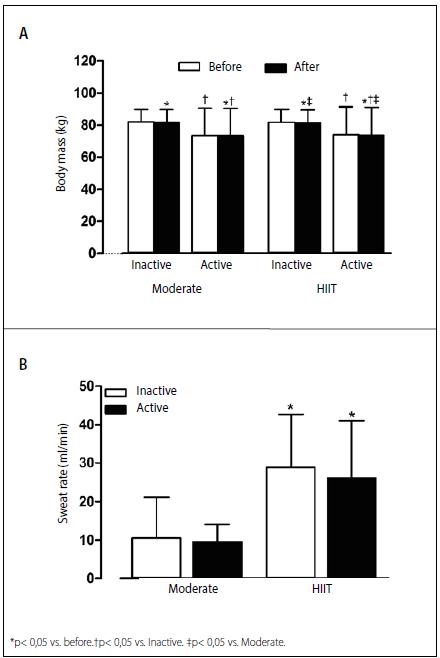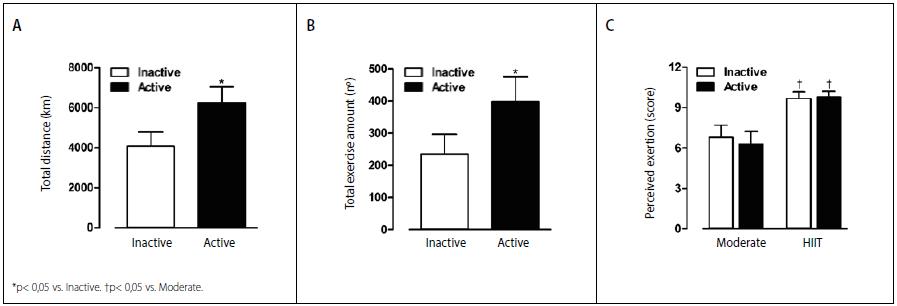ABSTRACT
Introduction:
Physical activity raises body temperature, increases the sweat rate and accelerates fluid loss during exercise, thereby impairing exercise performance. However, studies using the high intensity interval training (HIIT) approach and its effects on rates of perspiration and hydration are still inconclusive.
Objectives:
The objective of this study was to assess sweating and water loss during an HIIT workout session, using body weight, with healthy college students.
Methods:
Twenty male individuals (31 ± 07 years) were split into two groups: Active group (AG) and Inactive group (IG). The HIIT workout protocol, using body weight, consisted of a single bout with 1:1 stimuli, being: 30” “all out” intensity, involving jumping jack, mountain climber, burpee and squat jump exercises; and 30” of passive recovery, totaling 20 minutes of exercises. For comparison purposes, after 48 hours all the individuals underwent the continuous running protocol with intensity corresponding to 75% of maximum heart rate for 40 minutes. The intensity of the session was monitored continuously, at each 30”, using the perceived exertion scale for both protocols. To ensure euhydration status, all individuals ingested 500 ml of water 120 minutes before the training session.
Results:
Significant differences (p= 0.01) were found in body mass after HIIT compared to the Moderate session in both Active (HIIT: -0.60 ± 0.29 kg, Moderate: -0.26 ± 0.12 kg) and Inactive (HIIT: -0.92 ± 0.30 kg, Moderate: -0.26 ± 0.26 kg) groups, however, no differences were found between groups. Absolute sweating rate values comparing moderate and HIIT single bout in Inactive (Moderate: 10.55 ± 10.59 ml/min; HIIT: 28.90 ± 13.88 ml/min) and Active (Moderate: 9.60 ± 4.52 ml/min; HIIT: 26.00 ± 15.06 ml/min) groups were different between types of exercise, but not between groups.
Conclusions:
The sweating rate is influenced by the intensity of the exercise, being higher after HIIT than after a moderate exercise session. However, the sweating rate variation is not affected by the subjects’ physical activity level. Level of Evidence II; Diagnostic studies-Investigating a diagnostic test.
Keywords:
Physical exercise; High-Intensity interval training; Sweat


